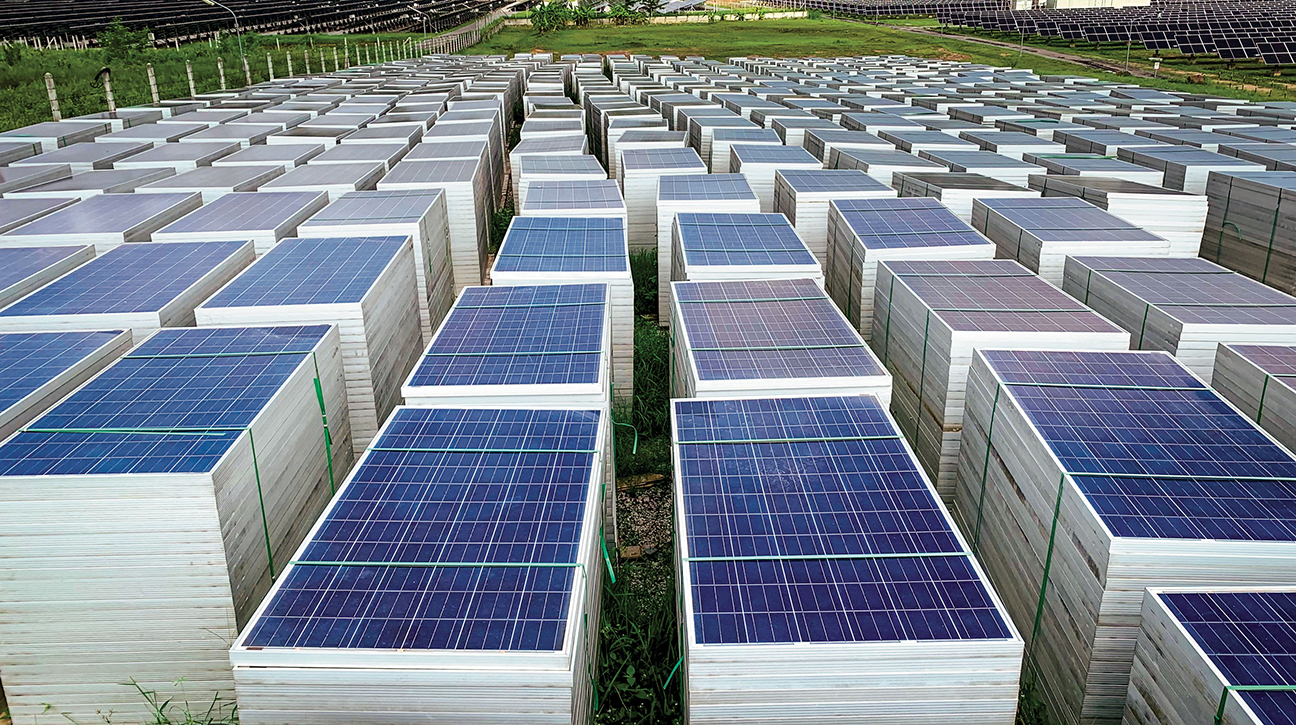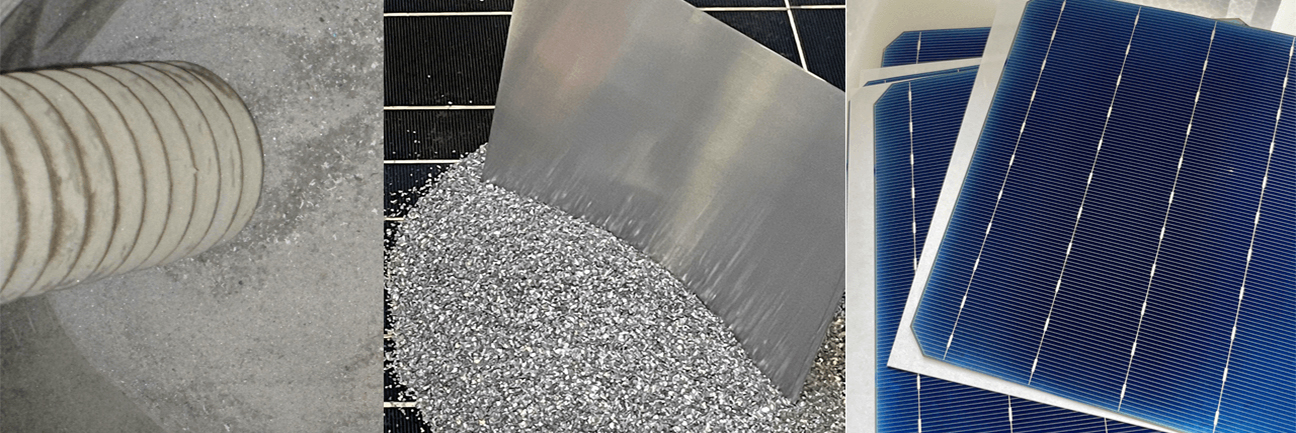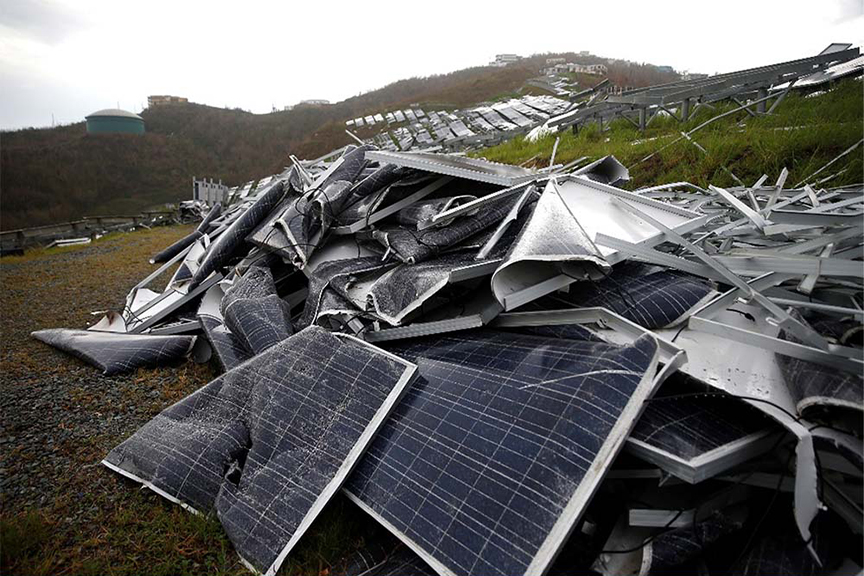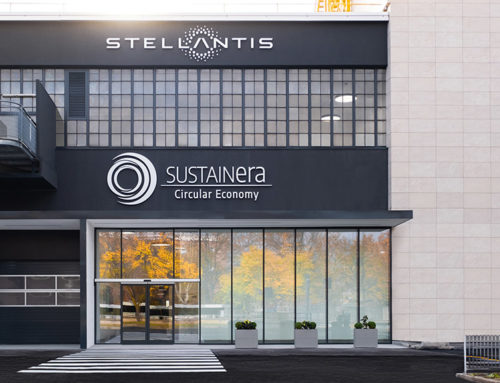As the world accelerates its transition to clean, renewable energy sources, solar panels have become a ubiquitous sight, adorning rooftops and vast solar farms. While these panels are essential for harnessing the power of the sun, they are not immune to the wear and tear of time and the elements. The result? A growing pile of discarded solar panels and solar panel waste. However, a silver lining exists in the form of solar panel recycling, an emerging industry poised to reshape our approach to renewable energy.

In Yuma, Arizona, a graveyard of discarded solar panels serves as a stark reminder of the challenges posed by solar panel waste. While solar panels are engineered to endure harsh weather conditions and serve as dependable sources of renewable energy for decades, they are not invulnerable to the passage of time and external factors. As solar technology proliferates worldwide, the number of decommissioned or damaged panels has surged. Instead of capitalizing on the valuable materials contained within these panels, which can be repurposed to create new panels or serve other industries, the default destination remains landfills.
This practice not only squanders the potential economic benefits of recycling but also poses environmental concerns. Solar panels contain various materials, including metals like copper, silver, and aluminum, as well as glass and crystalline silicon—all of which have intrinsic value. When these panels are discarded in landfills, these valuable resources are effectively buried and left to languish, requiring us to resort to resource-intensive and ecologically detrimental mining and production processes to meet demand.
Furthermore, landfilled solar panels do not decompose easily and can introduce environmental hazards. Over time, they may release harmful substances, including lead and other chemicals, which can contaminate surrounding soil and groundwater, creating long-lasting ecological repercussions. This, in turn, underscores the pressing need for a more sustainable approach to managing retired solar panels.
The need for change has not gone unnoticed.
The founders of “We Recycle Solar” recognized the urgency of addressing this issue. They established North America’s first utility-scale solar panel recycling plant in Yuma to tackle what they describe as a “tsunami” of solar waste. With the increasing reliance on solar energy to combat climate change, recycling solar panels is a crucial step in ensuring sustainability. This imperative arises from the pivotal role that solar power plays in the global effort to mitigate the adverse effects of climate change and transition towards a more sustainable and environmentally responsible future.
The escalating adoption of solar energy is a direct response to the pressing need to reduce greenhouse gas emissions and curb the catastrophic consequences of global warming. Solar panels, as the workhorses of this clean energy revolution, are instrumental in harnessing the boundless energy of the sun, effectively reducing our dependence on fossil fuels and diminishing our carbon footprint. They have emerged as a linchpin technology in the transition to a low-carbon economy.
Recycling aligns with the broader ethos of sustainability, promoting responsible consumption and production patterns. It sends a clear message that solar energy, a cornerstone of the renewable energy revolution, is not only about clean energy generation but also about responsible stewardship of resources.
At We Recycle Solar’s Yuma facility, the recycling process begins with the careful sorting of panels by brand and model. Panels with minor damage, often from storms, find new life as refurbished panels, meeting the demands of clients worldwide. The challenge lies in separating valuable materials like copper, silver, aluminum, glass, and crystalline silicon from the panels. These materials can then be repurposed, contributing to a circular economy.

The Economic Hurdle:
One significant obstacle hindering widespread solar panel recycling is the cost, and this economic challenge poses a critical barrier to the sustainable management of solar panel waste. In an era where the adoption of renewable energy sources, such as solar power, is essential to mitigate climate change and reduce our dependence on fossil fuels, addressing this cost disparity is paramount.
At first glance, the disparity in costs between sending a solar panel to a landfill and recycling it is stark. Landfill disposal can be achieved for as little as $1 per panel, an option that appears financially attractive in the short term. In contrast, the process of recycling a single panel can demand a significantly higher expenditure, typically amounting to around $30. This stark contrast in costs often dissuades both recyclers and consumers from choosing the more environmentally responsible recycling route.
To ensure a sustainable future, it is imperative that we bridge this economic gap and make solar panel recycling an economically viable and even cost-neutral option. Achieving this equilibrium involves a multifaceted approach.
1. Financial Incentives: Governments can play a pivotal role by introducing financial incentives and policies that encourage solar panel recycling. These incentives may include tax credits, subsidies, or grants aimed at offsetting the recycling costs for individuals, businesses, and recycling facilities. By reducing the financial burden, these incentives make recycling a more attractive and affordable option.
2. Technological Advancements: Continuous innovation in recycling technologies can lead to cost reductions. Research and development efforts should focus on streamlining the recycling process, enhancing efficiency, and minimizing resource requirements. As recycling technologies become more efficient, costs are likely to decrease, further closing the economic gap.
3. Circular Economy Initiatives: Encouraging the integration of solar panel recycling into the broader circular economy can help offset costs. For instance, recycling facilities can explore additional revenue streams by repurposing recovered materials for use in other industries, such as construction or electronics manufacturing. This diversification of income sources can make recycling more economically sustainable.
4. Public Awareness and Education: Raising public awareness about the environmental and economic benefits of solar panel recycling is essential. Informed consumers and businesses are more likely to prioritize recycling despite the initial costs, recognizing the long-term advantages for both the environment and their bottom line.
5. Industry Collaboration: Collaboration within the solar industry can lead to economies of scale. Solar manufacturers can work together with recycling companies to establish cost-effective recycling solutions that benefit the entire sector. Collective action can help drive down costs while ensuring responsible end-of-life management for solar panels.
Making recycling cost-neutral for recyclers and consumers alike is key to achieving widespread adoption.
The solar panel recycling industry is still in its infancy, with companies like Solarcycle and Solarpanelrecycling.com entering the arena. Market estimates indicate a growing global market, driven in part by incentives such as those in the Inflation Reduction Act in the U.S. These initiatives, combined with innovative approaches, are paving the way for a more sustainable future.
Researchers are continually seeking innovative ways to make solar panel recycling more efficient and cost-effective. One breakthrough method involves using microwaves to selectively heat the silicon components of panels, leaving glass, plastic, and aluminum intact. This approach promises cheaper and more energy-efficient recycling, reducing the environmental footprint of discarded panels.
Beyond recycling, researchers are exploring methods to recover high-purity silicon from expired solar panels for use in lithium-ion batteries. These advancements not only address the problem of solar panel waste but also contribute to the development of cleaner energy technologies.
Recycling solar panels is not just an environmental imperative; it is an economic opportunity and a step towards a sustainable future. olar panel recycling represents an economic opportunity that can bring about a paradigm shift in our approach to resource management. These panels are treasure troves of valuable materials, including copper, silver, aluminum, glass, and crystalline silicon. By recovering and repurposing these materials, we can reduce the need for resource-intensive mining and manufacturing processes. This reduces the strain on our ecosystems and conserves natural resources, making economic sense in the long run. Recycling solar panels encapsulates the essence of a circular, sustainable economy where products are designed with their end-of-life management in mind.






